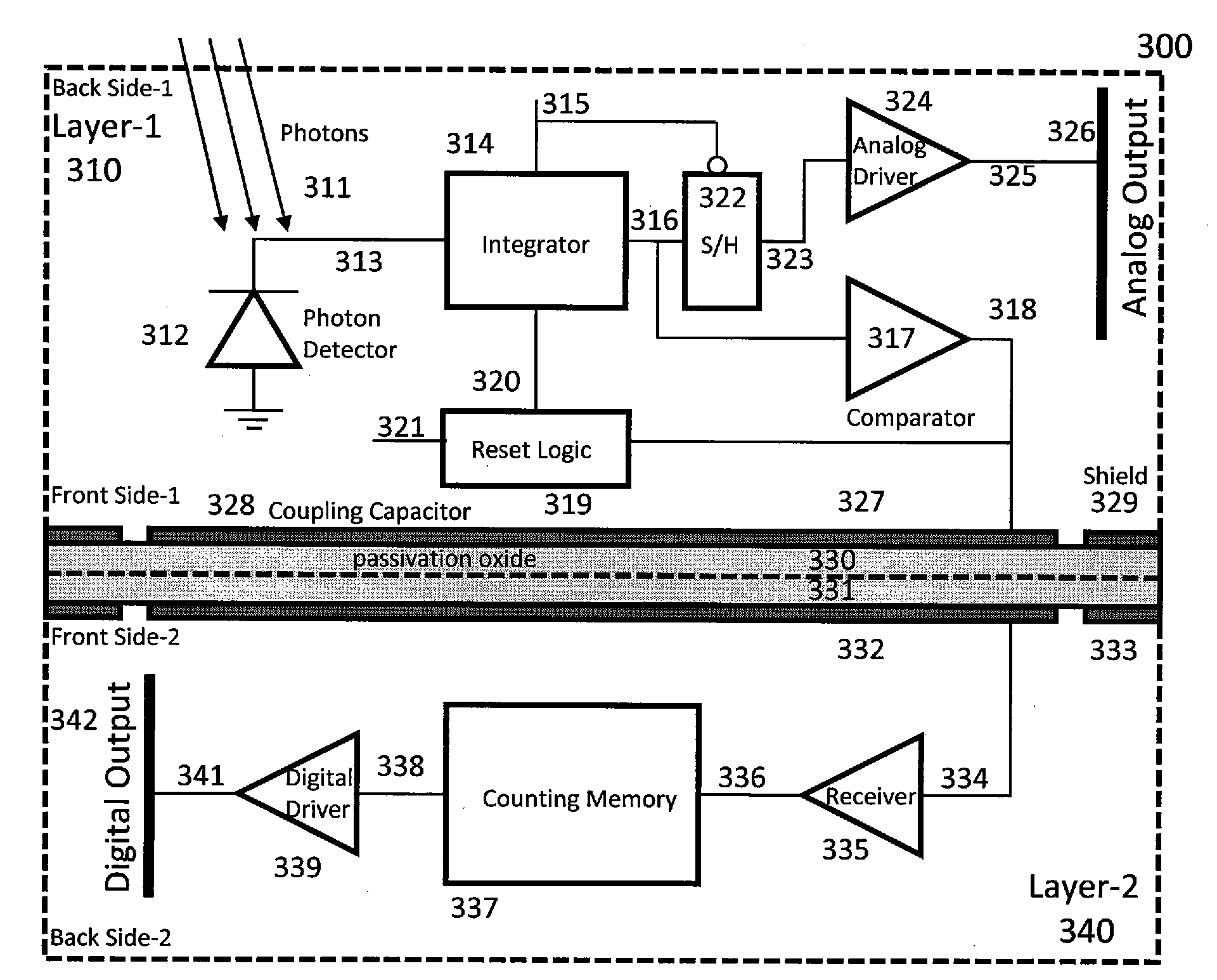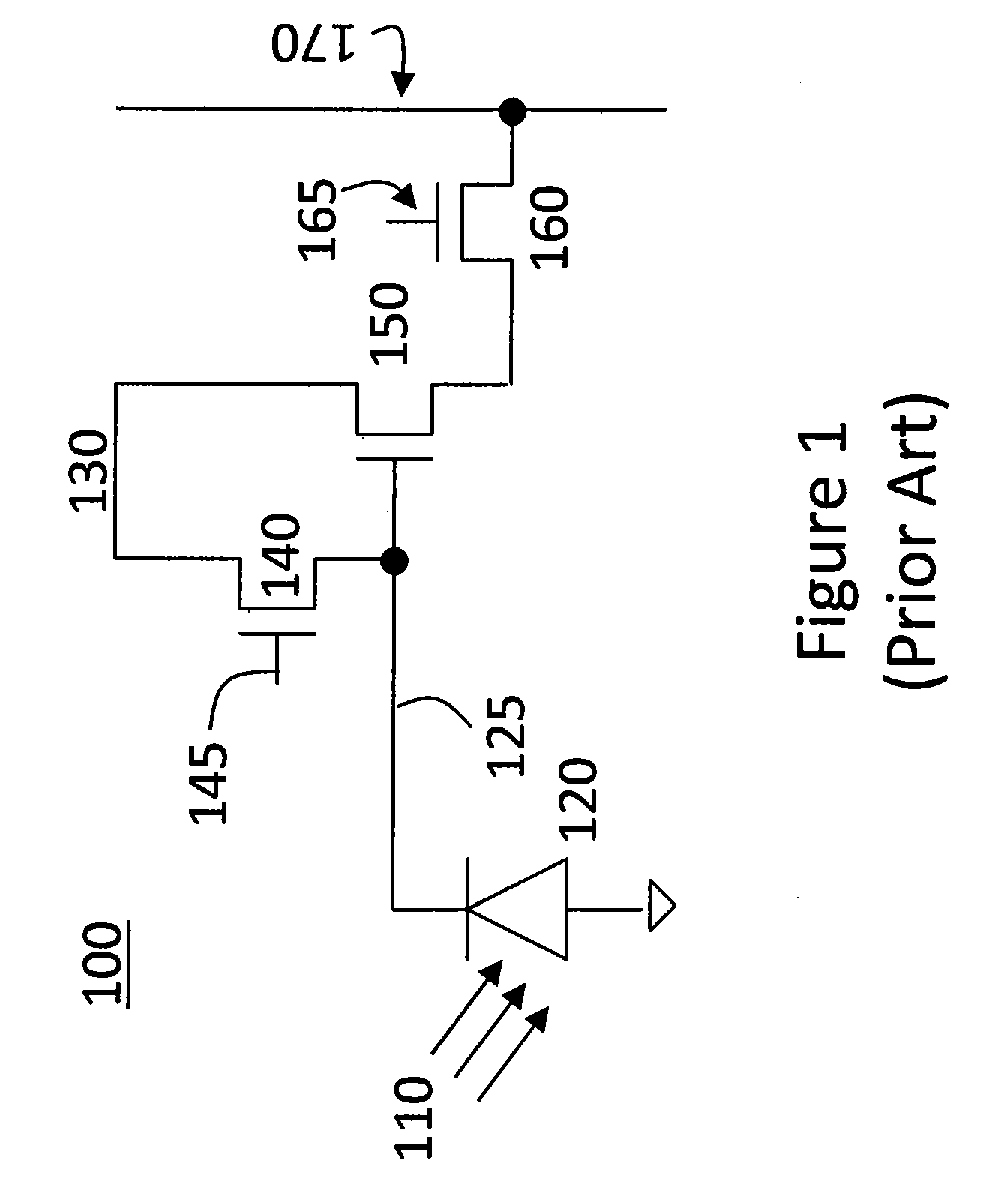Method and apparatus for backside illuminated image sensors using capacitively coupled readout integrated circuits
a capacitive coupled readout and image sensor technology, applied in the field of semiconductor-based image sensors, can solve the problems of long exposure time, high cost and complexity of silicon ccd fabrication process, and the limitation of conventional image sensors to silicon charge coupled devices (ccds), etc., to achieve high scanning rate, increase the dynamic range of pixel, and high dynamic range
- Summary
- Abstract
- Description
- Claims
- Application Information
AI Technical Summary
Benefits of technology
Problems solved by technology
Method used
Image
Examples
Embodiment Construction
[0024]FIG. 3 shows a circuit block diagram 300 according to an embodiment of the present invention. The functional embodiment of FIG. 3 can be implemented at pixel level in linear or plane array format using two physical layers, layer-1310 and layer-2340. In one embodiment, each pixel of an array of pixels independently implements the embodiment of FIG. 3. In FIG. 3, photons 311 are received by photon detector 312. Photon detector 312 can comprise any conventional photosensitive element such as a photodiode.
[0025]Photon detector 312 can be readout in different ways using the conventional three transistor (3-T) pixel structure shown in FIG. 1 or using more advanced pixel readout circuits using a capacitive trans-impedance amplifier (CTIA), which is basically an integrator. The CTIA has the advantage of providing constant detector reverse bias potential during exposure. Charge signal 313, generated by photon detector 312, is accumulated by integrator 314. In the case of the 3-T pixel,...
PUM
 Login to View More
Login to View More Abstract
Description
Claims
Application Information
 Login to View More
Login to View More - R&D
- Intellectual Property
- Life Sciences
- Materials
- Tech Scout
- Unparalleled Data Quality
- Higher Quality Content
- 60% Fewer Hallucinations
Browse by: Latest US Patents, China's latest patents, Technical Efficacy Thesaurus, Application Domain, Technology Topic, Popular Technical Reports.
© 2025 PatSnap. All rights reserved.Legal|Privacy policy|Modern Slavery Act Transparency Statement|Sitemap|About US| Contact US: help@patsnap.com



